Girolamo Savonarola
1452-1498
People say, “That’s all in the past.”
It isn’t.
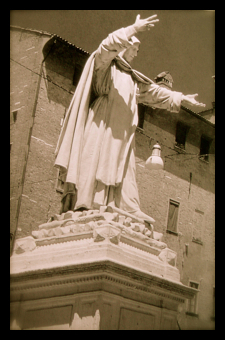
Savonarola’s statue in the city of his birth, Ferrara
Did the Dominican preacher and
reformer, Girolamo Savonarola really exist? Yes, and the portrait
of him found in Fanatics is historically accurate. His
life is briefly described in Fanatics: the early years,
pages 141-144; his time in Florence (Firenze), pages 154-156; and
his execution, pages 158-161.
He was a man of unusually small stature--even for the time, when
the average size of a human being was smaller than now--with
intense, fiery eyes, a large, hooked nose, and a passionate,
inspiring manner of speaking. In his sermons at San Marco and Santa
Maria del Fiore in Florence he claimed to have had visions which
foretold the future. He frequently threatened his listeners--and
the city of Florence in general--with hellfire and damnation if
they did not repent of their sins and follow an ascetic life like
his. He also railed against the many corruptions of the
Church.
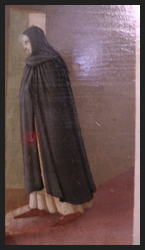
The Dominican habit as worn by the figures seated at the table in the cell depicted in Garnet’s dreams.
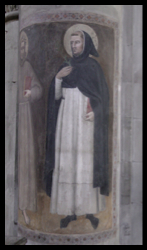
Savonarola’s training occurred in Bologna at the Dominican Convent attached to the San Domenico (St. Dominic’s) Basilica.
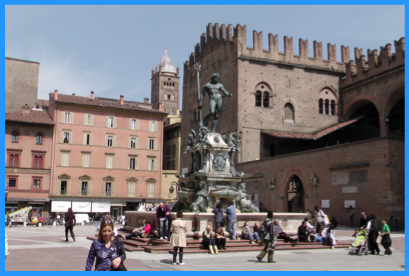 central
square of Bologna
central
square of Bologna
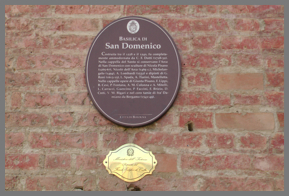 Basilica
and Convent of San Domenico
Basilica
and Convent of San Domenico 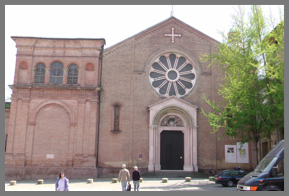
In Florence, Savonarola eventually became so famous he was able to
influence the government. His centre of operations was San Marco
Church and Dominican Convent.
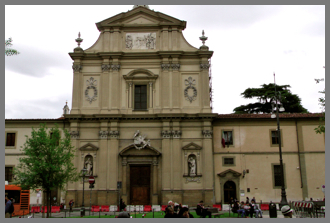
Inside San Marco’s can be found the bronze statue of Girolamo
Savonarola.
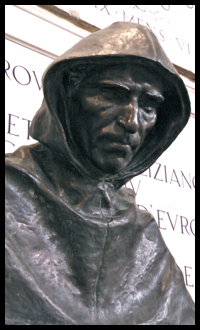 Savonarola’s statue in San Marco’s church.
Savonarola’s statue in San Marco’s church.
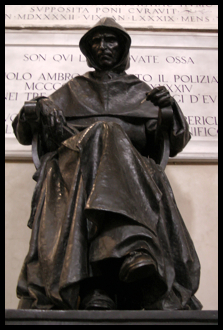
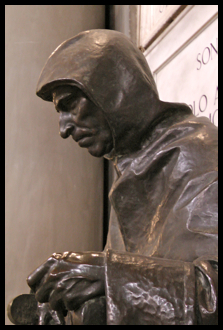 He is
holding a book in his right hand.
He is
holding a book in his right hand. 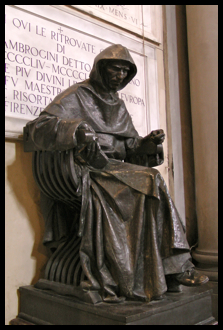
After his arrest, Savonarola was taken to the Palazzo Vecchio in
the Piazza della Signoria (the government building).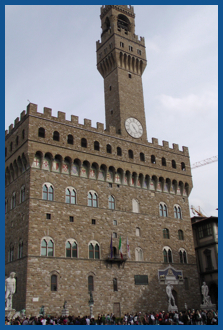
He was executed in the Piazza (square) in 1498 (p.
158-161).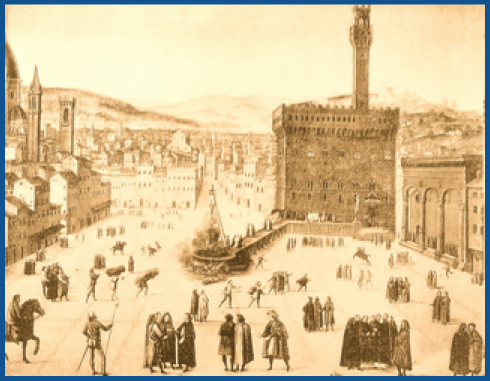
The gallows can be seen in the centre of the illustration. In the
exact location where the fire burned, a pavement inset tells of the
execution.
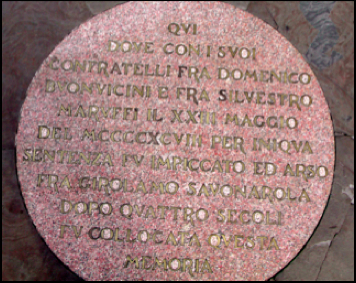
Savonarola is named 4th line from the bottom. The other two names
are the Dominicans who were hanged before him.
The two sides of the medal Garnet found in the hidden cupboard. On
the left, Savonarola in profile.
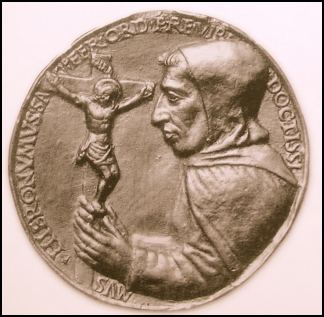
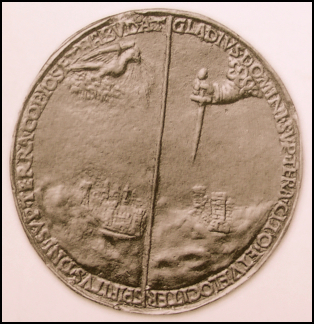
--from Seward, The Burning of the Vanities.